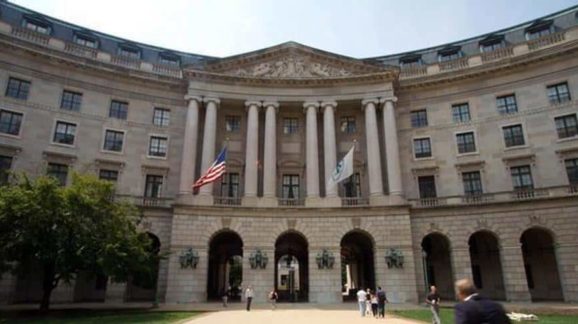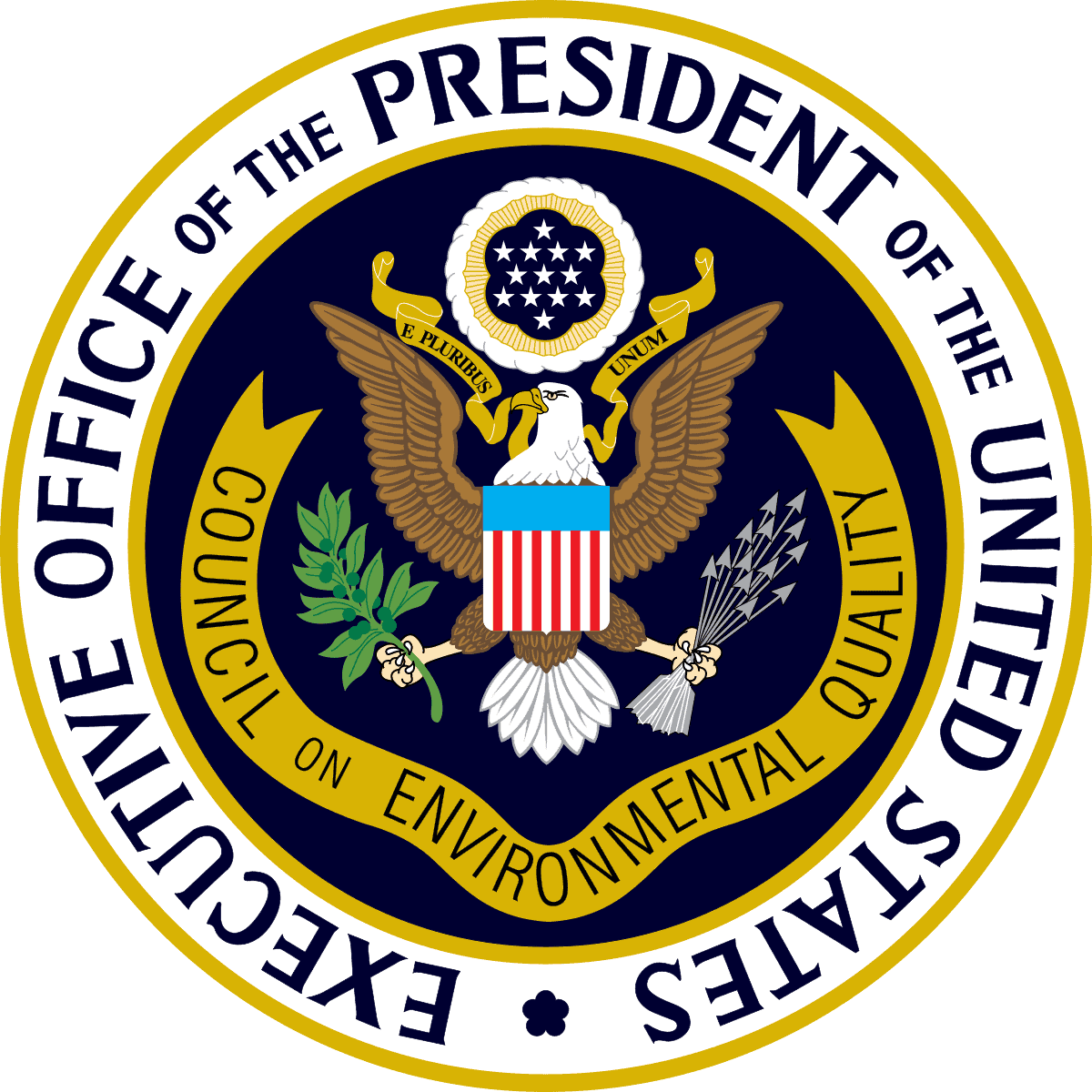White House Releases Revised Guidance for Climate Policy

 The White House Council on Environmental Quality (CEQ) recently released the pre-publication draft of their proposed National Environmental Policy Act (NEPA) Guidance on Consideration of Greenhouse Gas Emissions. If finalized, this guidance will replace the Obama administration’s August 1, 2016 final guidance, which was withdrawn on April 5, 2017, pursuant to President Trump’s Executive Order 13783 of March 28, 2017, “Promoting Energy Independence and Economic Growth.”
The White House Council on Environmental Quality (CEQ) recently released the pre-publication draft of their proposed National Environmental Policy Act (NEPA) Guidance on Consideration of Greenhouse Gas Emissions. If finalized, this guidance will replace the Obama administration’s August 1, 2016 final guidance, which was withdrawn on April 5, 2017, pursuant to President Trump’s Executive Order 13783 of March 28, 2017, “Promoting Energy Independence and Economic Growth.”
Enacted in 1969, NEPA is the foundational federal environmental statute. It requires federal agencies to consider the potential environmental impacts of proposed agency actions, such as approving construction or development projects, before making a final decision.
Fool’s Errand
A key problem with requiring NEPA reviews of greenhouse gas emissions is that if an agency action, such as authorizing construction of a natural gas pipeline, makes economic sense, its benefits will vastly outweigh any hypothetical climate change impacts due to the project’s direct or indirect emissions over vast stretches of time.
Moreover, trying to save the world one project at a time is a fool’s errand. Even shutting down the entire U.S. economy would avert only 0.034°C to 0.062°C of global warming by 2050, which is smaller than the 0.08°C margin of error in current monitoring systems. The climatic effect of particular projects, even the largest, is orders of magnitude smaller.
Weaponizing NEPA
The “climate benefit” of putting the NEPA spotlight on project-related greenhouse gas emissions is political. NEPA consideration of greenhouse gas emissions empowers demagogues to mobilize climate activists and feeds the hubris of those who believe government exists to bankrupt businesses they don’t like. A prime case in point is the phony climate controversy over the Keystone XL pipeline.
As climate scientist Chip Knappenberger pointed out, even if we make the wildly implausible assumption that all crude shipped through the Keystone XL would be new oil that would otherwise remain in the ground, running the pipeline at full capacity for 1,000 years would increase global average surface temperature by less than one-tenth of one degree Celsius.
In addition, the Obama administration’s own NEPA analysis found that approving the pipeline is the low-carbon alternative. If approval were denied, about the same quantity of oil would be imported into the United States, but it would come by rail, barge, and smaller pipelines, which are less energy efficient than a single large pipeline.
Politically, however, none of that mattered. Multiple NEPA reviews of the pipeline’s greenhouse gas emissions facilitated the Obama administration’s death-by-delay strategy and kept the Keystone pot boiling long enough to recruit campaign workers for the 2012 and 2014 elections.
Anti-Growth Agenda
The Obama CEQ final guidance hints at the epistemological futility of assigning climate change damages to particular projects, only to claim it doesn’t matter:
CEQ recognizes that the totality of climate change impacts is not attributable to any single action, but are exacerbated by a series of actions including actions taken pursuant to decisions of the Federal Government. Therefore, a statement that emissions from a proposed Federal action represent only a small fraction of global emissions is essentially a statement about the nature of the climate change challenge, and is not an appropriate basis for deciding whether or to what extent to consider climate change impacts under NEPA.
Then comes the policy implication:
Moreover, these comparisons are also not an appropriate method for characterizing the potential impacts associated with a proposed action and its alternatives and mitigations because this approach does not reveal anything beyond the nature of the climate change challenge itself: the fact that diverse individual sources of emissions each make a relatively small addition to global atmospheric [greenhouse gas] concentrations that collectively have a large impact.
The political upshot is not hard to fathom. If thousands of individual projects collectively have a “large impact,” then permission should be denied to as many projects as possible.
Comparing the Two Documents
The Trump CEQ draft guidance differs from the Obama-era document chiefly in tone and emphasis.
To begin with, the title has been revised. The Obama CEQ document purports to provide NEPA guidance “on consideration of greenhouse gas emissions and the effects of climate change.” That’s really not possible because, as discussed above, the greenhouse gas emissions of any project or group of projects are too small to have discernible climate change effects. Appropriately, the Trump CEQ document more modestly provides NEPA guidance “on consideration of greenhouse gas emissions,” period.
Alas, the text of the document still assumes NEPA reviews can and should ascertain “climate change effects.” Like the Obama CEQ final guidance, the new draft guidance states that a proposed action’s reasonably foreseeable greenhouse gas emissions “may be used as a proxy for assessing potential climate effects.”
To its credit, the draft guidance is a bit more caveated in how “indirect emissions” (those induced by a project rather than directly emitted) should be estimated. While both documents instruct agencies to consider only effects that have a “reasonably close causal relationship” to a proposed agency action, the draft guidance concludes more pointedly: “A ‘but for’ causal relationship is not sufficient.” Translation: To establish causality, the action must be the proximate link in a causal chain, not merely one link among many.
Both documents instruct agencies to use the “rule of reason” when estimating project-related greenhouse gas emissions. However, the Obama CEQ final guidance leaves it at saying that the scope of analysis should be “proportional” to the quantity of emissions anticipated. In contrast, the draft guidance instructs agencies to estimate emissions only when those are “substantial enough to warrant quantification.” No numerical threshold is proposed but the implication is that some project-related emissions are too puny to bother with. As noted, though, one could say the same about emissions from any project, regardless of how large. The draft guidance does not go there.
Both documents instruct agencies to consider “reasonable alternatives” to proposed actions that would “mitigate” greenhouse gas emissions. Although the Obama guidance does not say agencies must implement such measures, it speaks glowingly about “enhanced energy efficiency, lower [greenhouse gas]-emitting technology, carbon capture, carbon sequestration (e.g., forest, agricultural soils, and coastal habitat restoration), sustainable land management practices, and capturing or beneficially using [greenhouse gas] emissions such as methane.” The Trump draft guidance contains no comparable list and explicitly states that “NEPA does not require agencies to adopt mitigation measures.”
Both documents state that NEPA does not require agencies to “monetize costs and benefits of a proposed action.” However, whereas the Obama CEQ guidance cites “federal social cost of carbon (SCC) estimates” as an “example” of what agencies may select as a method of preparing cost-benefit analyses, the draft CEQ guidance states that “an agency need not weigh the effects of the various alternatives in NEPA in a monetary cost-benefit analysis using any monetized Social Cost of Carbon (SCC) estimates and related documents (collectively referred to as “SCC estimates”), or other similar cost metrics.”
Conclusion
Predictably, environmental groups have been quick to condemn the Trump CEQ’s draft NEPA guidance (E&E News, June 25th), albeit for reasons that are less than clear. Nothing of substance in the Obama guidance has been changed or repudiated. To repeat, the difference is one of tone and emphasis.
The draft guidance no longer exhorts agencies to treat the “nature of the climate change challenge” as justification for constant sermonizing. It allows but does not pressure agencies to pursue the fool’s errand. It allows agencies to use social cost of carbon analysis but no longer touts it as some kind of higher truth. In short, the critics don’t like the music. Tough.